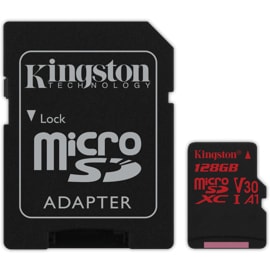I recently downloaded an img file online where a lot of people claimed the image was too large for their SD cards. For that reason, I got a bit curious to know which card he used, which cards were larger/smaller, etc.
These were the partitions on that image.
Device Boot Start End Sectors Size Id Type
image.img1 32768 262143 229376 112M c W95 FAT32 (LBA)
image.img2 262144 14598143 14336000 6.8G 83 Linux
image.img3 14598144 250347519 235749376 112.4G 7 HPFS/NTFS/exFAT
The last sector is marked in bold. The person that shared the image claimed that the card he used was the same Samsung 128gb EVO select card. I guess he was lucky. I have 2 of those cards and this image didn’t fit on either of them.
I went through all of my SD cards to check their sizes hoping to find one that fit. Here are the sizes in order from smallest to largest.
Team 128GB Elite microSDXC UHS-I U3, V30, A1, 4K UHD Memory Card with SD Adapter, Speed Up to 90MB/s (TEAUSDX128GIV30A103)

Disk /dev/sde: 117.75 GiB, 126437294080 bytes, 246947840 sectors
Disk model: MassStorageClass
Units: sectors of 1 * 512 = 512 bytes
Sector size (logical/physical): 512 bytes / 512 bytes
I/O size (minimum/optimal): 512 bytes / 512 bytes
Disklabel type: dos
Disk identifier: 0xc9f931c9
Device Boot Start End Sectors Size Id Type
/dev/sde1 32768 262143 229376 112M c W95 FAT32 (LBA)
/dev/sde2 262144 14598143 14336000 6.8G 83 Linux
/dev/sde3 14598144 246947839 232349696 110.8G 7 HPFS/NTFS/exFAT
This was the smallest of the cards. The difference in size is only a couple of gigabytes, but if you tried to load the image on this card by the byte, you would not be successful.
SanDisk 128GB Extreme MicroSDXC UHS-I Memory Card with Adapter – C10, U3, V30, 4K, A2, Micro SD – SDSQXA1-128G-GN6MA
Disk /dev/sdd: 119.08 GiB, 127865454592 bytes, 249737216 sectors
Disk model: MassStorageClass
Units: sectors of 1 * 512 = 512 bytes
Sector size (logical/physical): 512 bytes / 512 bytes
I/O size (minimum/optimal): 512 bytes / 512 bytes
Disklabel type: dos
Disk identifier: 0xc9f931c9
Device Boot Start End Sectors Size Id Type
/dev/sdd1 32768 262143 229376 112M c W95 FAT32 (LBA)
/dev/sdd2 262144 14598143 14336000 6.8G 83 Linux
/dev/sdd3 14598144 249737215 235139072 112.1G 7 HPFS/NTFS/exFAT
This card was also one of the smaller cards.
SAMSUNG (MB-ME128GA/AM) 128GB 100MB/s (U3) MicroSDXC EVO Select Memory Card with Full-Size Adapter
Disk /dev/sdd: 119.25 GiB, 128043712512 bytes, 250085376 sectors
Disk model: MassStorageClass
Units: sectors of 1 * 512 = 512 bytes
Sector size (logical/physical): 512 bytes / 512 bytes
I/O size (minimum/optimal): 512 bytes / 512 bytes
Disklabel type: dos
Disk identifier: 0xc9f931c9
Device Boot Start End Sectors Size Id Type
/dev/sdd1 * 32768 250085375 250052608 119.2G 7 HPFS/NTFS/exFAT

Disk /dev/sdd: 119.48 GiB, 128286982144 bytes, 250560512 sectors
Disk model: MassStorageClass
Units: sectors of 1 * 512 = 512 bytes
Sector size (logical/physical): 512 bytes / 512 bytes
I/O size (minimum/optimal): 512 bytes / 512 bytes
Disklabel type: dos
Disk identifier: 0xc9f931c9
Device Boot Start End Sectors Size Id Type
/dev/sdd1 32768 262143 229376 112M c W95 FAT32 (LBA)
/dev/sdd2 262144 14598143 14336000 6.8G 83 Linux
/dev/sdd3 14598144 250347519 235749376 112.4G 7 HPFS/NTFS/exFAT
/dev/sdd4 250347520 250560511 212992 104M 83 Linux
The difference in sizes are trivial, but as you can see, the image would only fit on 1 of the cards. I’ll show you in a later post how I got the image to fit on any card.













